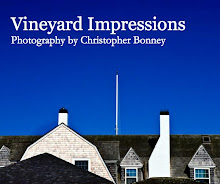
So Last Season, 2009
In the current (#84) issue of LensWork is a wonderfully simple observation by the late photographer and educator Bill Jay:
“Pictures of sunsets are too easy, like clubbing baby seals.”
In tourism marketing, photographs of beautiful sunrises and sunsets are such a cliché that only the most unimaginative resorts and attractions use them as primary visual images. There are very few places in the world where the sunrises and sunsets look different, and that’s usually a function of the foreground rather than the sunrise or sunset itself.
I’ll bet most photographers can still recall their first compelling sunrise or sunset. We all do it, just like when we go to New Mexico we simply must do our own version of an Ansel Adams' Moonlight Over Hernandez. (Mine's here.)
Years ago I built up my nerve and called a respected museum photography curator to see if I could come by and visit with some of my work. I was struggling to find my artistic “voice” and thought the curator might be able to see something in my schizophrenic collection of images that might give me some guidance.
The curator was cordial and looked carefully at each of the two dozen or so images I’d brought. He commented on some of it and put some aside without comment.
When he was finished, he picked up the stack of images he’d said nothing about and told me, “It’s too expected.” It took me a second to understand what he was saying. I hadn’t ever heard the term used in that context. But as soon as I realized what he was saying I knew exactly what he meant. The pictures might have been “pretty” or technically competent. But they were like beautiful sunsets. There was nothing about them that attracted the eye, no story that drew the viewer in, or composition that was just askew enough to engage the brain.
I still take a lot of “expected” pictures. It's a hard habit to break. But I make an effort every time I'm out with the camera to look for new, unexpected ways to present the familiar.
Which brings us to another observation from Bill Jay:
“Books on how to be a photographer are as futile as dance lessons on the radio.”
I used to believe this, and still do to some extent. A friend, though, recently steered me to Chris Orwig’s new book, Visual Poetry. Orwig’s a teacher at the Brooks Institute out in California. Visual Poetry is ostensibly a serious introduction to digital photography. There is a lot of material about the basics of photography, composition, exposure and digital imagery. You can find that in a lot of less expensive how-to books. What make Visual Poetry well worth looking at are its first several chapters that are all about developing one’s artistic “eye.” I don’t think I’ve ever seen this before in any book about photography. It was like reading in just one place and in relatively few pages everything meaningful I’ve ever learned about photography.
So Last Season, by the way, is my "unexpected" homage to Fashion Week.



















